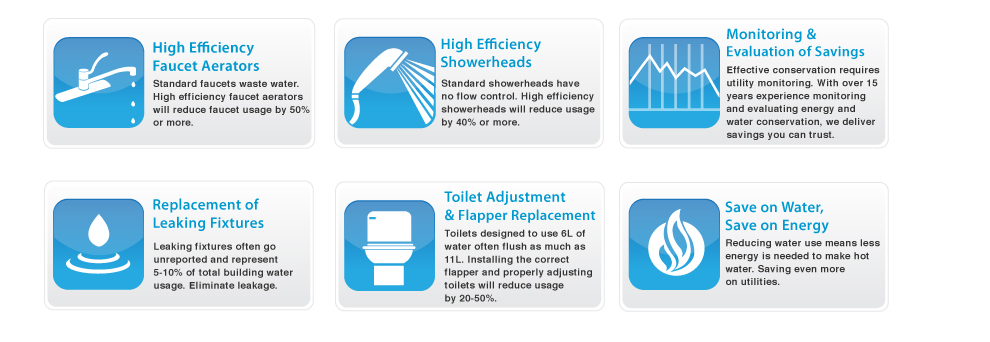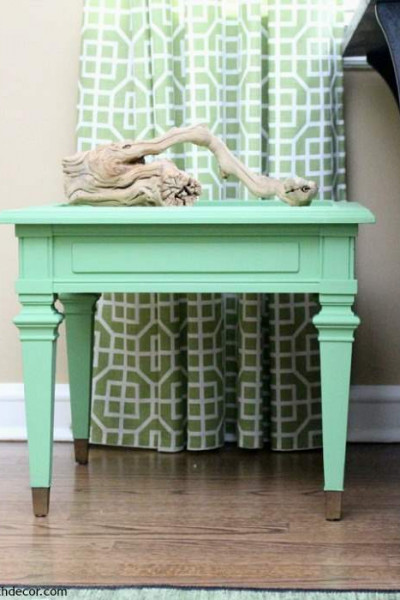Introduction:
In an age where environmental consciousness is paramount, adopting eco-friendly practices in our homes has become more than just a trend; it’s a responsibility. Sustainable living not only reduces our carbon footprint but also leads to healthier and more cost-effective homes. In this article, we’ll explore a variety of eco-friendly home improvement ideas that can help you create a greener and more sustainable living environment.
One of the cornerstones of sustainable living is energy efficiency. By upgrading your home with energy-efficient appliances and making improvements like better insulation and weatherproofing, you can significantly reduce your energy consumption. This not only lowers your utility bills but also decreases your impact on the environment. Plus, many governments offer incentives and rebates for eco-friendly home upgrades, making it a financially wise choice as well. So, as you embark on your journey towards a greener home, remember that small changes can lead to significant benefits for both your wallet and the planet.
To delve further into this matter, we encourage you to check out the additional resources provided here: Green Building Standards and Certification Systems | WBDG …
Energy-Efficient Appliances:
One of the most effective ways to reduce your home’s energy consumption is by replacing old appliances with energy-efficient models. Look for the ENERGY STAR label when shopping for appliances like refrigerators, washing machines, and water heaters. These appliances are designed to use significantly less energy, resulting in lower utility bills and a reduced environmental impact.
Additionally, consider investing in smart home technology to optimize your energy use. Smart thermostats can learn your heating and cooling preferences, adjusting the temperature when you’re not at home to save energy. Lighting controls, like smart bulbs and switches, allow you to schedule and remotely control lighting, ensuring lights are off when not needed.
Furthermore, don’t overlook the importance of proper insulation and sealing gaps in your home’s structure. A well-insulated home retains heat in the winter and stays cooler in the summer, reducing the need for constant heating or cooling.
In conclusion, adopting energy-efficient appliances, integrating smart home solutions, and improving your home’s insulation are proactive steps that not only lower your energy bills but also contribute to a more sustainable and eco-friendly living environment. By making these changes, you’re not only benefiting your household budget but also reducing your carbon footprint and promoting a greener future.
To delve further into this matter, we encourage you to check out the additional resources provided here: Eco-friendly home improvement projects
Solar Panels:
Harnessing the power of the sun through solar panels is an excellent way to generate clean and renewable energy. Solar panels can be installed on rooftops or in your yard to produce electricity for your home. Beyond reducing your reliance on fossil fuels, solar panels can even earn you tax credits and lower your electricity bills over time.
“Additionally, when considering sustainable living, don’t forget about the importance of energy-efficient appliances. Modern appliances like energy-efficient refrigerators, washing machines, and LED lighting can significantly reduce your home’s energy consumption. Look for appliances with ENERGY STAR ratings to ensure they meet high energy efficiency standards while helping you save both energy and money.”
You can also read more about this here: 40 Ways to Be More Eco Friendly in 2023 | GreenMatch

Efficient Insulation:
Proper insulation plays a vital role in maintaining a comfortable indoor temperature while reducing energy consumption. Invest in quality insulation for your home’s walls, attic, and floors. Consider eco-friendly insulation materials like recycled denim or natural fibers to minimize your environmental footprint.
“Investing in high-quality insulation is not only a smart choice for maintaining a comfortable indoor temperature but also an eco-friendly one. When selecting insulation materials, opt for sustainable options like recycled denim or natural fibers. This helps reduce your energy consumption and minimize your environmental impact, making your home both comfortable and eco-conscious.”
You can also read more about this here: 25 Ways to Make Your Home Sustainable | Constellation

Water-Saving Fixtures:
Conserving water is another essential aspect of sustainable living. Swap out old faucets, showerheads, and toilets with water-saving fixtures. Low-flow toilets and aerated faucets can significantly reduce water wastage without compromising performance.
Moreover, landscaping with native plants that are adapted to your region’s climate can significantly reduce water usage in your garden. Additionally, consider installing rain barrels to collect rainwater for outdoor use, reducing the need for irrigation. These small changes not only contribute to water conservation but also demonstrate your commitment to sustainable living, setting an example for others to follow. By incorporating water-saving practices in your home and garden, you not only reduce your environmental impact but also contribute to the preservation of this precious resource for future generations.
Looking for more insights? You’ll find them right here in our extended coverage: Nine Eco-Friendly and Sustainable Home Renovation Ideas | Blog …

Smart Home Technology:
Integrate smart home technology to optimize energy usage. Smart thermostats, for instance, allow you to control your home’s heating and cooling remotely and adjust temperatures based on your schedule. Additionally, smart lighting systems can automatically adjust brightness and turn off lights in unoccupied rooms, saving both energy and money.
Moreover, consider the convenience and energy savings offered by smart appliances. Smart washing machines, dishwashers, and refrigerators can operate during off-peak hours when energy costs are lower. They can also alert you to any issues, helping you address maintenance needs promptly and preventing unnecessary energy waste.
Another valuable aspect of smart home technology is the ability to monitor your energy usage in real-time. Many smart home systems provide detailed insights into your energy consumption, allowing you to identify areas where you can further optimize your habits and reduce wasteful practices.
In conclusion, the integration of smart home technology not only enhances your convenience but also empowers you to make informed decisions about your energy usage. By using these technologies to their full potential, you can create an energy-efficient home that aligns with your lifestyle and helps you save on utility bills while reducing your environmental footprint.
Explore this link for a more extensive examination of the topic: The Sustainable Smart Home: An Overview and 6 Green Tips

Rainwater Harvesting:
Collecting rainwater for various household uses is an eco-friendly practice. Install rain barrels or cisterns to capture rainwater from your roof. You can use this harvested rainwater for watering your garden, washing your car, or even flushing toilets.
“Moreover, sustainable living extends to your choice of flooring materials. Opt for eco-friendly flooring options such as bamboo, cork, or reclaimed wood. These materials not only add a unique and natural touch to your home but also help reduce the demand for new resources and minimize environmental impact.”
Explore this link for a more extensive examination of the topic: What is Green Infrastructure? | US EPA

Eco-Friendly Flooring:
When renovating your home’s floors, consider eco-friendly flooring options like bamboo, cork, or reclaimed wood. These materials are sustainable and add a touch of natural beauty to your living spaces.
“When embarking on a flooring renovation, think green by opting for eco-friendly choices such as bamboo, cork, or reclaimed wood. These sustainable materials not only enhance the aesthetics of your home with their natural beauty but also contribute to a more environmentally conscious living space.”
To delve further into this matter, we encourage you to check out the additional resources provided here: 9 Eco-Friendly Home Improvement Projects
Native Landscaping:
Transform your outdoor spaces into environmentally friendly havens by planting native vegetation. Native plants are adapted to the local climate and require less water and maintenance. They also attract local wildlife, contributing to biodiversity.
Creating an environmentally friendly outdoor oasis doesn’t stop at planting native vegetation. Consider implementing sustainable hardscape materials for paths, patios, and decks. Options like reclaimed wood, recycled materials, or permeable pavers not only add an eco-friendly touch but also enhance the overall aesthetics of your outdoor spaces.
To further reduce your environmental impact, explore energy-efficient outdoor lighting solutions such as solar-powered or LED lights. These not only consume less energy but also provide a warm and inviting atmosphere for your outdoor gatherings.
Lastly, consider setting up a composting system to recycle organic waste from your garden and kitchen. Compost enriches your soil naturally, reducing the need for synthetic fertilizers and completing the cycle of sustainability in your outdoor haven. With these eco-conscious choices, you can transform your outdoor spaces into green, sustainable retreats that benefit both you and the environment.
To delve further into this matter, we encourage you to check out the additional resources provided here: 12 Ways to Live More Sustainably

Composting:
Reducing kitchen waste and enriching your garden soil is easy with a composting system. Composting food scraps and yard waste reduces landfill contributions while providing nutrient-rich compost for your garden.
Furthermore, composting is a sustainable way to close the loop on organic matter. By composting food scraps like vegetable peels, coffee grounds, and eggshells, you’re not only diverting waste from landfills but also creating a valuable resource for your garden. The resulting compost enriches your soil with essential nutrients, improves its structure, and enhances its water retention capabilities.
Composting is a straightforward process that anyone can incorporate into their daily routine. You can choose from various composting methods, such as traditional outdoor compost bins, indoor worm composting systems, or even countertop compost containers for small spaces. Regardless of the method you select, composting helps reduce kitchen waste, lower your environmental impact, and nurture healthier plants in your garden.
In conclusion, embracing composting as a part of your sustainable lifestyle is a simple yet impactful way to minimize waste, enrich your garden, and contribute positively to the environment. Whether you’re a seasoned gardener or a novice, composting offers both environmental and gardening benefits that align with the principles of sustainable living.
If you’d like to dive deeper into this subject, there’s more to discover on this page: How to Make a Compost Pile – Best Way to Start Composting

DIY Green Projects:
Get creative with do-it-yourself (DIY) eco-friendly home improvement projects. Create homemade cleaning products using natural ingredients like vinegar and baking soda. Craft reusable shopping bags from old t-shirts or repurpose furniture instead of buying new.
“Furthermore, consider installing energy-efficient appliances and lighting fixtures in your home. Energy-efficient appliances, such as Energy Star-rated refrigerators and LED lighting, consume less energy and lower your utility bills. Making these upgrades not only reduces your carbon footprint but also enhances the overall sustainability of your home.”
Additionally, you can find further information on this topic by visiting this page: What Is Green Architecture? How to Build an Eco-Conscious Home

Conclusion:
Embracing sustainable living through eco-friendly home improvements not only benefits the environment but also enhances your quality of life. By adopting these eco-conscious ideas, you’ll create a more energy-efficient, environmentally responsible, and comfortable living space for yourself and future generations. Sustainable living is a commitment to a greener, healthier, and more responsible way of life.
“Choosing to embrace sustainable living through eco-friendly home improvements is a win-win decision. Not only do these initiatives benefit the environment by reducing your ecological footprint, but they also significantly improve your daily quality of life. By committing to a greener and more responsible way of living, you’re creating a comfortable, energy-efficient, and environmentally responsible home that will positively impact both your present and future generations.”
Additionally, you can find further information on this topic by visiting this page: Our Common Future: Report of the World Commission on …
More links
You can also read more about this here: 8 Eco-Friendly Homes Packed With Sustainable Design Ideas
